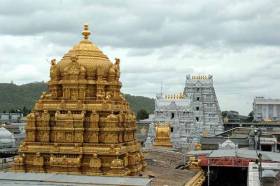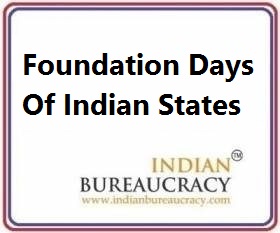
IndianBureaucracy.com Greets all people of Andhra Pradesh on its Formation Day today | Andhra Pradesh is a state in the south-eastern coastal region of India. It is the seventh-largest state by area covering an area of 162,975 km2 and tenth-most populous state with 49,386,799 inhabitants. It is bordered by Telangana to the north-west, Chhattisgarh to the north, Odisha to the north-east, Tamil Nadu to the south, Karnataka to the west and the Bay of Bengal to the east. It has the second longest coastline in India after Gujarat, of about 974 km (605 mi).
The state was once a major Buddhist pilgrimage site in the country and a Buddhist learning center which can be seen in many sites in the state in the form of ruins, chaityas and stupas. It is also known as the land of the world-famous diamond Koh-i-Noor and many other globally known diamonds due to their source in its Kollur Mine. It is also known as the “rice bowl of India” for being a major producer of rice in India. Its official language is Telugu; one of the classical languages of India, the fourth most spoken language in India and the 11th-most spoken language in the world.
Early inhabitants were known as the Andhras, tracing their history to the Vedic period when they were mentioned in the 8th century BCE Rigvedic text Aitareya Brahmana. The region also derives its name from Satavahanas who are also known as Andhras, the earliest kings of Andhra Pradesh and India. Early peoples supported local art culture by building temples and sculptures of the Buddhist monuments in the state.
It was ruled by Mauryan Empire, Satavahana dynasty, Salankayanas, Andhra Ikshvakus, Pallavas, Vishnukundinas, Eastern Chalukyas, Rashtrakutas, Cholas, Kakatiyas, Vijayanagara Empire, Gajapati Empire, Mughal Empire, Deccan sultanates, Qutb Shahi dynasty, and Asaf Jahis. In the 3rd century BCE, Andhra was a vassal kingdom of Ashoka but after his death Andhra became powerful and extended its empire to the whole of Maratha country and beyond.
Andhra Pradesh comprises two major regions, namely Rayalaseema in the south-west and Coastal Andhra bordering the Bay of Bengal in the east and north-east. The state has thirteen districts, nine located in Coastal Andhra and four in Rayalaseema. The state also has a union territory, Yanam – a district of Puducherry which lies to the south of Kakinada in the Godavari delta on the eastern side of the state. It is the only state with three capitals (proposed). The largest city and commercial hub of the state, Visakhapatnam being the executive capital while Amaravati and Kurnool are legislative and judicial capitals, respectively.
The economy of Andhra Pradesh is the 8th largest in India, with a gross state domestic product (GSDP) of ₹9.71 trillion (US$130 billion) and has the country’s 17th-highest GSDP per capita of ₹168,000 (US$2,200). Andhra Pradesh ranks 27th among Indian states in Human Development Index (HDI).[9] It has a jurisdiction over almost 15,000 square kilometres (5,800 sq mi) of territorial waters. Andhra Pradesh hosted 121.8 million visitors in 2015, a 30% growth in tourist arrivals over the previous year, making it the third most-visited state in India.
The Tirumala Venkateswara Temple in Tirupati is one of the world’s most visited religious sites, with 18.25 million visitors per year. The region is also home to a variety of other pilgrimage centres, such as the Pancharama Kshetras, Mallikarjuna Jyotirlinga and Kodanda Rama Temple. The state’s natural attractions include the beaches of Visakhapatnam, hill stations such as the Araku Valley and Horsley Hills, and the deltas of Konaseema in the Godavari river and Diviseema in the Krishna river.




Leave a Reply
You must be logged in to post a comment.